| Early Spring Date: | April 11 |
| Late Spring Date: | May 29 |
| Best Dates to See in Spring: | April 24 - May 23 |
Spring: Ovenbirds are common at Monticello Park, and you should see one if you come to the park during the first two weeks in May. They are the only "one-word warbler" who visits the park.
Fall: Ovenbirds are fairly common at Monticello during the fall. They nest in the DC metro area, so some pass through the park in early August. (They do not nest at Monticello.) Ovenbirds can be seen throughout September and into early October.
Where to See Them in the Park
Ovenbirds walk on the ground and are relatively tame. You can see them anywhere in the park. A good place to look is along the ridge, especially near the fence line by the Kust property. Ovenbirds sometimes sing from low branches. As with the waterthrushes, they usually stand still on the branch and turn their head.
Physical Description
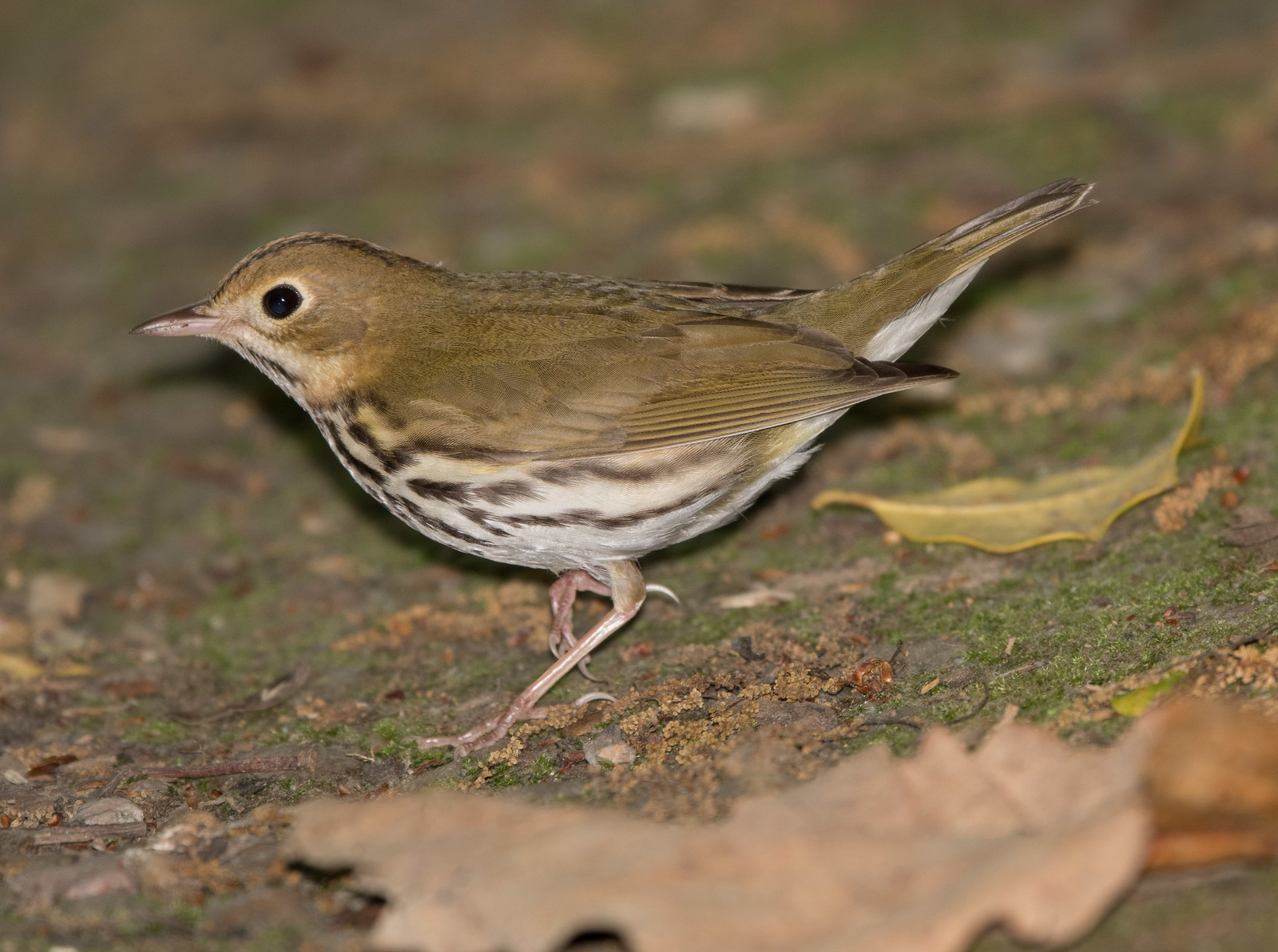
Ovenbirds look like thrushes and behave a lot like them. They are smaller than thrushes, and their back is olive brown rather than the warmer brown of many thrushes. They often strut rather than walk, and they frequently cock their tail. Note the long nails on their toes. The sexes are similar, and the plumage does not vary between spring and fall.

Sometimes, Ovenbirds can be seen perching in trees.
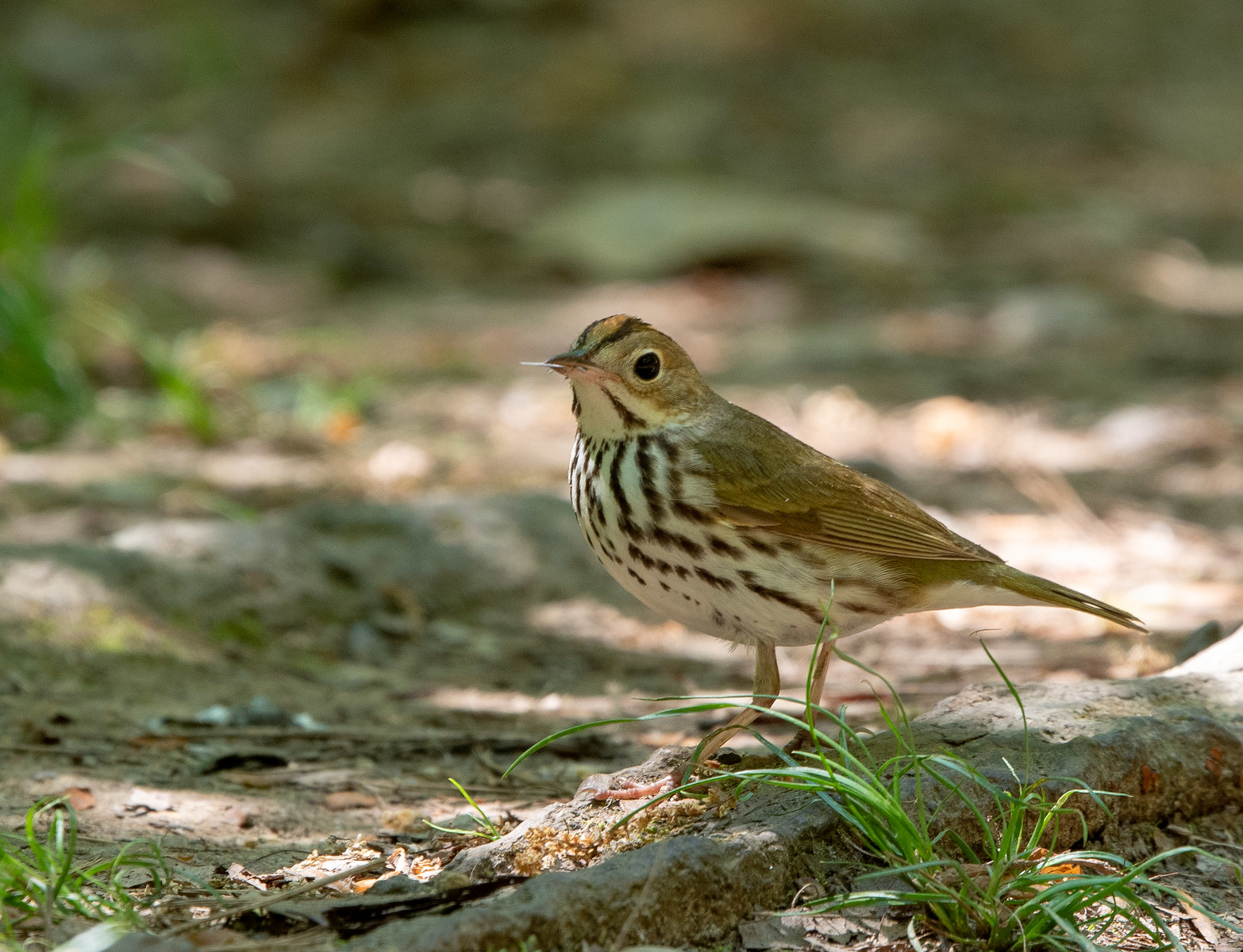
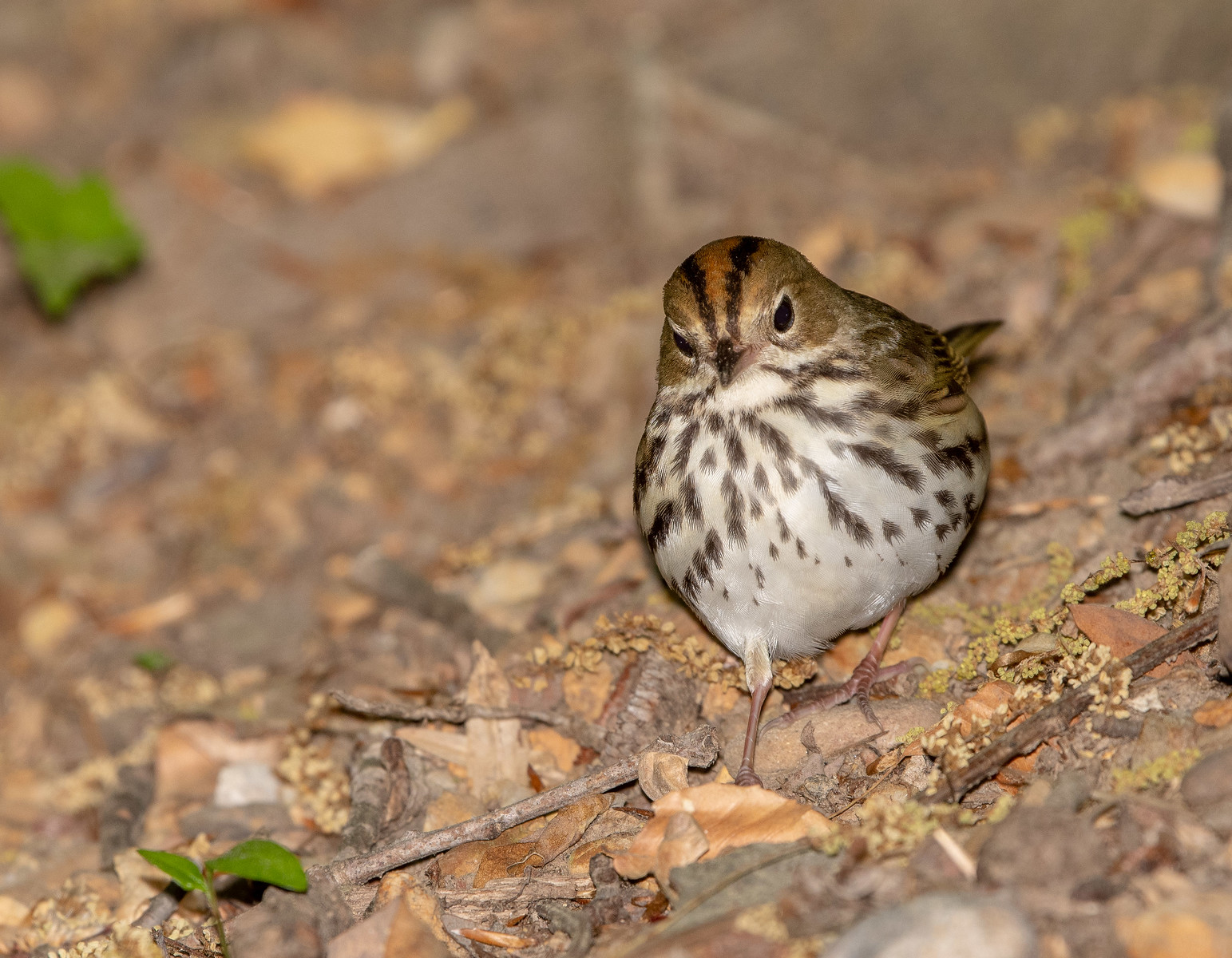
The most distinctive fieldmark is the orange crown, bordered by black stripes. No other species at Monticello has a similar head pattern. Ovenbirds spend a lot of time on dark forest floors. Their eyes are large, and they have a white eyering. The throat is white, bordered by black stripes. The breast and the flanks are covered with small black chevrons. The belly and undertail are white.
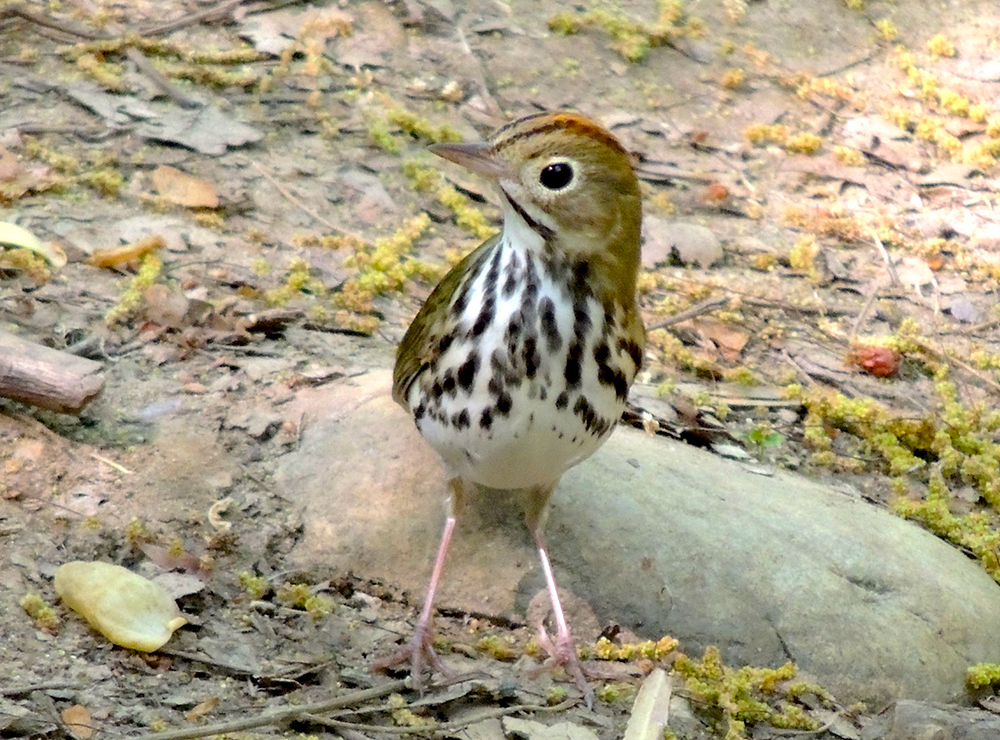
Ovenbirds are larger than most warbler species. They have long pink legs, and you often see Ovenbirds traversing an area on foot rather than flying.
Vocalizations
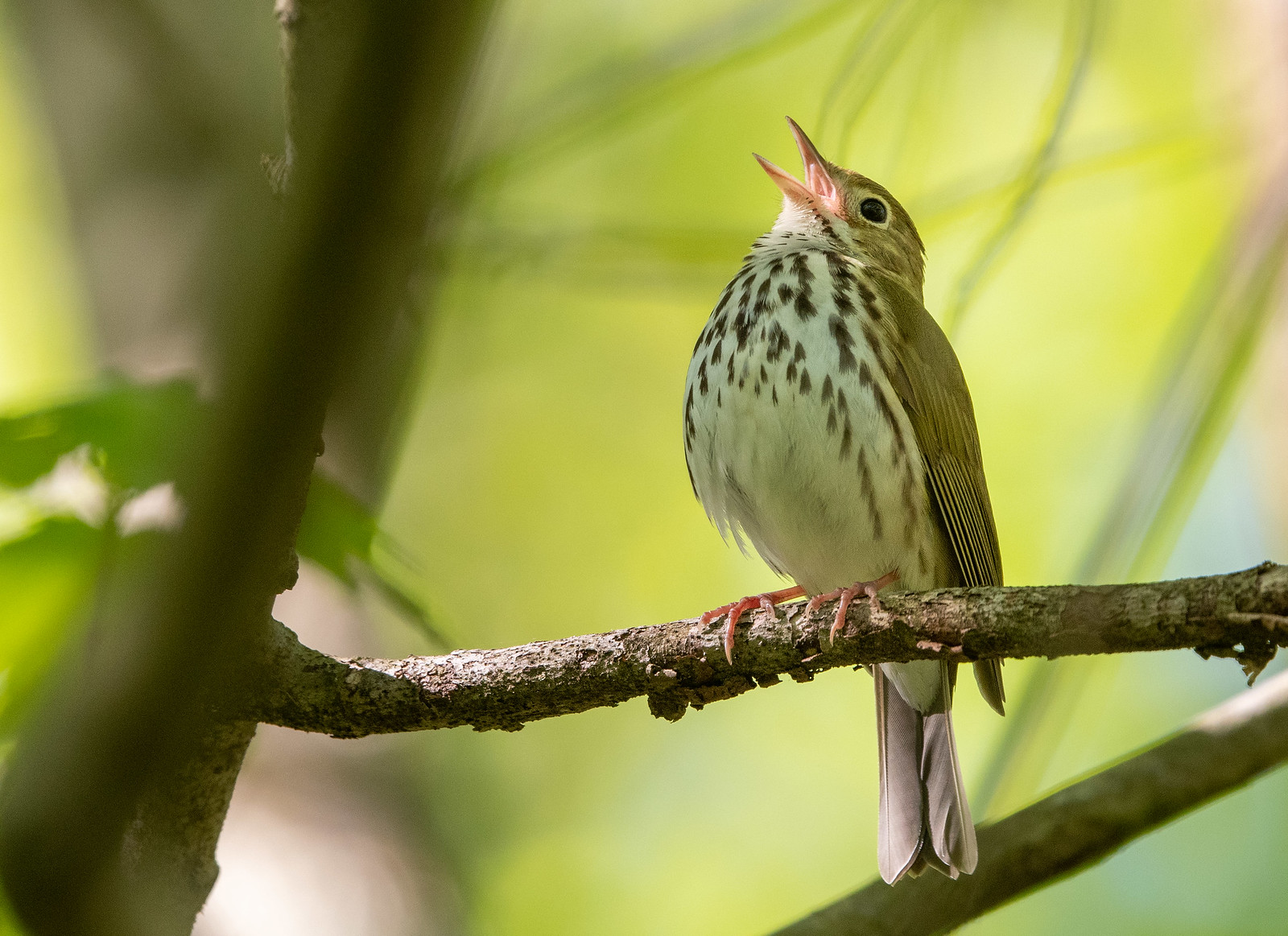
The Ovenbird's easily recognizable song gets progressively louder and sounds like teacher - teacher - teacher.
Hear the vocalizations of the Ovenbird.
Notes

Ovenbirds are the only warbler ever featured by itself on a US postage stamp. In 2005, an Ovenbird was on a stamp that was part of a habitat sheet about the Northeast deciduous forest. Ovenbirds also have inspired poetry. Robert Frost wrote the following sonnet:
The Oven Bird
There is a singer everyone has heard,
Loud, a mid-summer and a mid-wood bird,
Who makes the solid tree trunks sound again.
He says that leaves are old and that for flowers
Mid-summer is to spring as one to ten.
He says the early petal-fall is past
When pear and cherry bloom went down in showers
On sunny days a moment overcast;
And comes that other fall we name the fall.
He says the highway dust is over all.
The bird would cease and be as other birds
But that he knows in singing not to sing.
The question that he frames in all but words
Is what to make of a diminished thing.
Origin of Names
Common Names: Ovenbird from the domed nests they build. They are not related to the large family of birds known as ovenbirds in the Neotropics, some of whom build nests that look like clay ovens.
Genus Name: Seiurus means tail-waving. The Ovenbird used to be in the same genus as the waterthrushes, for whom this name was more appropriate.
Species Name: Aurocapilla means golden hair, from the orange crown.
Ovenbird video footage
Return to the Index
